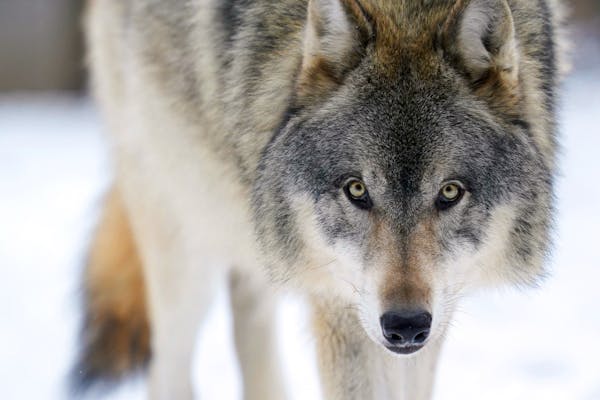5 key takeaways about wolves in Minnesota
Since Congress first put wolves on the Endangered Species List in the 1970s, the predators have slowly returned to more of their native range. But in every place where wolves rebounded, fierce debates followed — about their numbers, hunting and trapping rights, and how close the predators could live to human civilization.
Here's a closer look at Minnesota's wolves, which have played an outsized role in the species' recovery and have shaped the way scientists study them. Some of the techniques used by Minnesotans to avoid conflicts and cattle depredations may need to be adopted in other states if the predators continue to return. Here are five key takeaways:
1. Minnesota is the only place in the contiguous United States to never kill all its wolves.
But it wasn't for lack of trying. In the late 1800s and early 1900s, wolves were almost entirely poisoned and killed out of the Lower 48. Minnesota, too, tried to eradicate them, dropping meat tainted with strychnine from airplanes and burning pups in their dens. The state offered bounties of $35 for each wolf hide as late as the 1960s. Yet several hundred survived deep in the northern woods. The wolves that now populate Minnesota, Wisconsin and Michigan descend from those survivors.
2. Minnesota has as many wolves as the rest of the Lower 48 combined.
More than 2,700 wolves live in Minnesota, equaling rough estimates for the combined total of every other state outside Alaska. The wolf population here has been remarkably stable, bouncing between 2,400 and 3,000 animals since the late 1990s. That's well above the original federal recovery goal of 1,400, which underestimated how adaptable wolves are and how close they can live to farms, ranches and homes without causing problems.
The stability of the population shows that wolves have likely already spread to every part of the state that has enough prey to support them and is far enough from humans.
3. Wolf attacks on livestock are rare.
Despite such high numbers, wolves attack cattle, turkeys and other animals on less than 2% of livestock operations in Minnesota's wolf range. As wolf numbers have remained stable for nearly three decades, so too have those conflicts. Wolf depredations happen at about 90 farms a year. Their effect on deer populations also has not changed since the late 1990s.
Ranchers have had mixed results using guard donkeys, which will charge wolves on sight, dogs, alarms, flags and other methods to scare wolves away. The most promising method comes from a ranch on the border of Voyageurs National Park, where wolf researchers are building a 6-foot-high fence with a skirt around the property. Early results show that wild wolves don't seem to try to jump fences for prey.
4. Minnesota wolves are often killed legally.
Wolves in the Upper Midwest are listed as "threatened," which doesn't afford them as strong protection as species that are more imperiled. When the predators attack cattle or a pet dog, federal trappers with the U.S. Department of Agriculture arrive to bait, trap and kill any wolves in the area.
Trappers kill about 200 of them in Minnesota every year — twice the number of wolves living in Yellowstone National Park. Taxpayers reimburse farmers market price for livestock proved to be killed by a wolf.
5. Mysteries remain.
Researchers have come to Minnesota to learn about how wolves behave and survive.
The oldest ongoing studies are in the Superior National Forest, where the animals were never eradicated. Early population estimates in the 1930s from Sigurd Olson, the great naturalist, proved to be remarkably accurate.
Advances in technology, especially radio collars, unlocked secrets about pack sizes, hunting methods, impacts on prey and survival rates. Now with GPS and trail cameras, researchers are getting their first detailed look at how the secretive predators live in the summer, when they all but disappear into the thick foliage of the woods.
There are still many unanswered questions, including: Why do wolves disperse the way they do? Why are some so adept at finding berries or hunting certain animals, such as beaver or fish, while others never seem to try? And, most importantly to wildlife managers, exactly what does a healthy wolf population do for the greater ecosystem?
